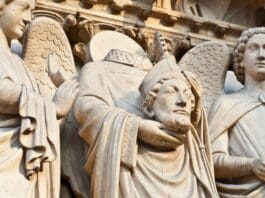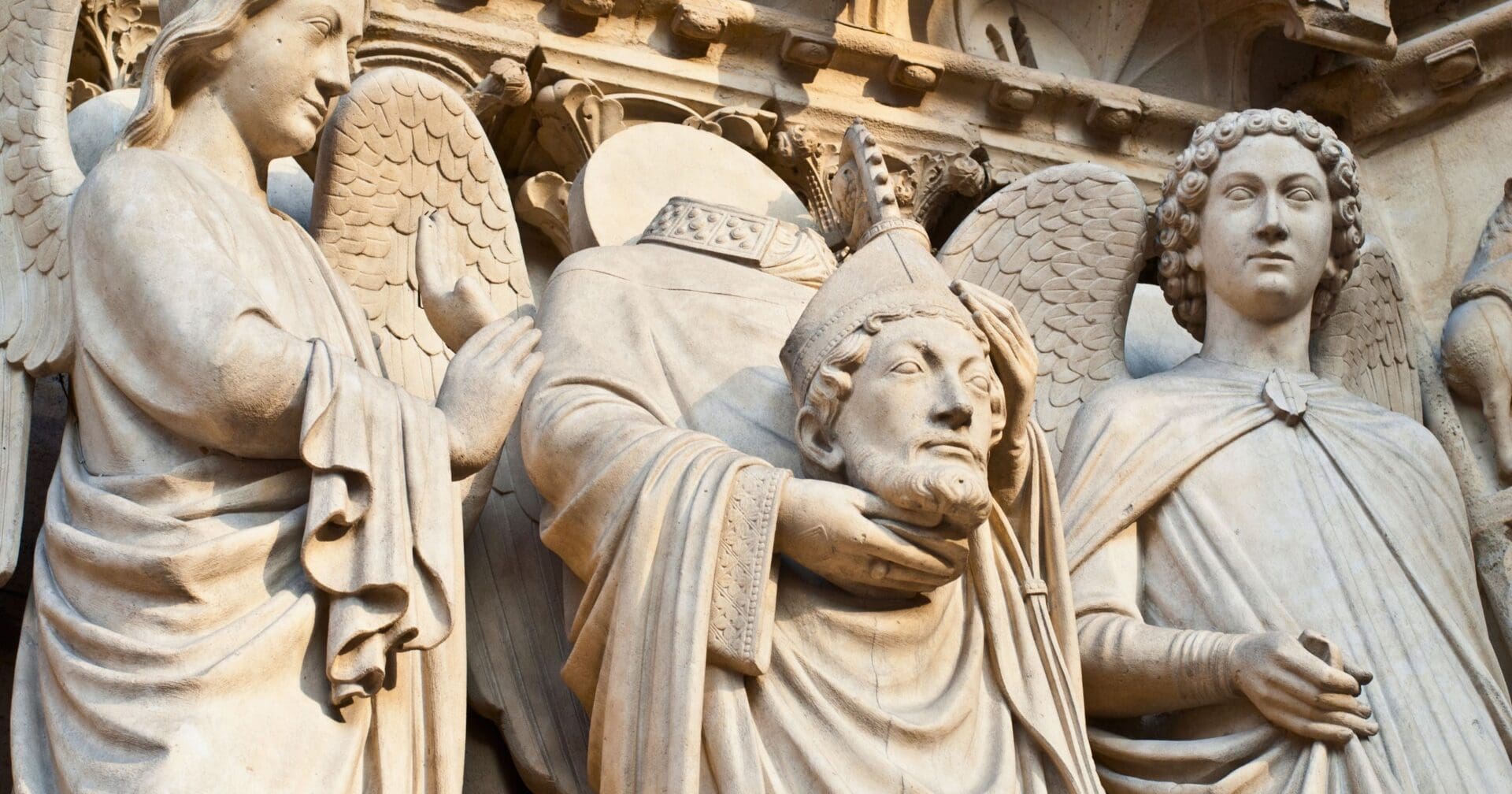
Three martyrs who met their end around 258 A.D. are prominent in Saint Gregory of Tours’ writings from the sixth century.
Of the trio, Saint Denis (often referred to as Dionysius) stands out prominently. Originating from Italy, he was commissioned to Gaul (modern-day France) as a missionary around 250 A.D. by Pope St. Clement, accompanied by five other bishops.
Choosing an island in the Seine, close to the Roman enclave of Lutetia Parisorium – which later evolved into Paris – as his missionary hub, Denis is celebrated as the inaugural bishop of Paris and France’s Apostle. His endeavors in Paris culminated in his capture, alongside St. Rusticus and St. Eleutherius. Subsequent accounts describe them as Denis’ associates, possibly his priest and deacon or deacon and subdeacon, but details remain scarce.
Enduring imprisonment and multiple unsuccessful execution attempts, the trio eventually met their fate by the sword, with their remains discarded into the Seine. Denis’ disciples, however, managed to recover his body for a proper burial. The subsequent chapel built over his resting place laid the foundation for the renowned abbey of Saint-Denis.
As centuries unfolded, the ninth in particular saw the intertwining of Denis’ narrative with that of Dionysius the Areopagite and Pseudo-Dionysius.
Thankfully, modern scholarship has disentangled his story, reinstating his unique sainthood. Portrayed often as a beheaded martyr with a vine-covered neck, holding his own head adorned with a mitre, St. Denis has been a revered figure in Paris since the era of St. Gregory and is recognized as the patron saint of France.
Photo credit: Shutterstock.com
The post Saint Denis appeared first on uCatholic.
Daily Reading
Saturday of the Third Week of Advent
Reading 1 Sg 2:8-14 Hark! my lover–here he comesspringing across the mountains,leaping across the hills.My lover is like a gazelleor a young stag.Here he stands behind our wall,gazing through the…
Daily Meditation
Shout for Joy! The Lord is in Your Midst!
Click here for daily readings Prior to the National Eucharistic Congress in Indianapolis last July, communities across the nation participated in Eucharistic processions in the streets, where priests carried our…




